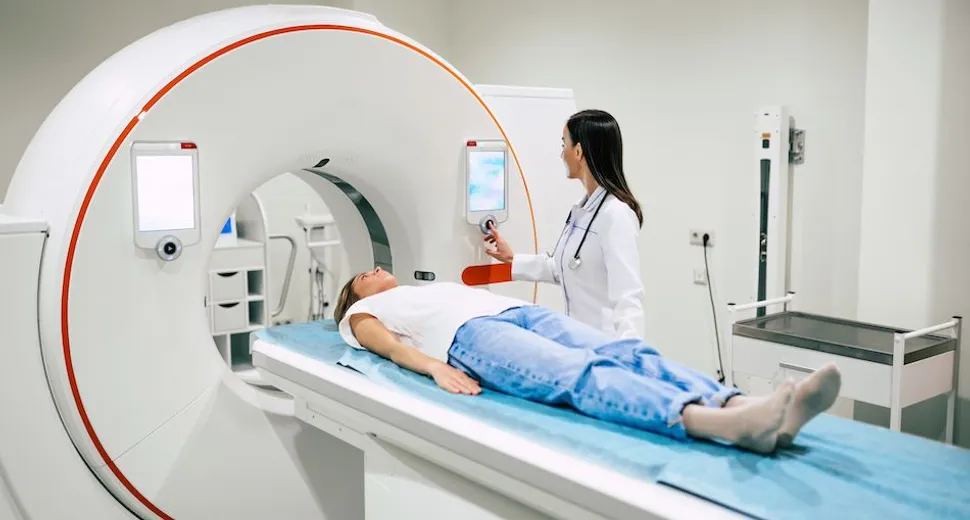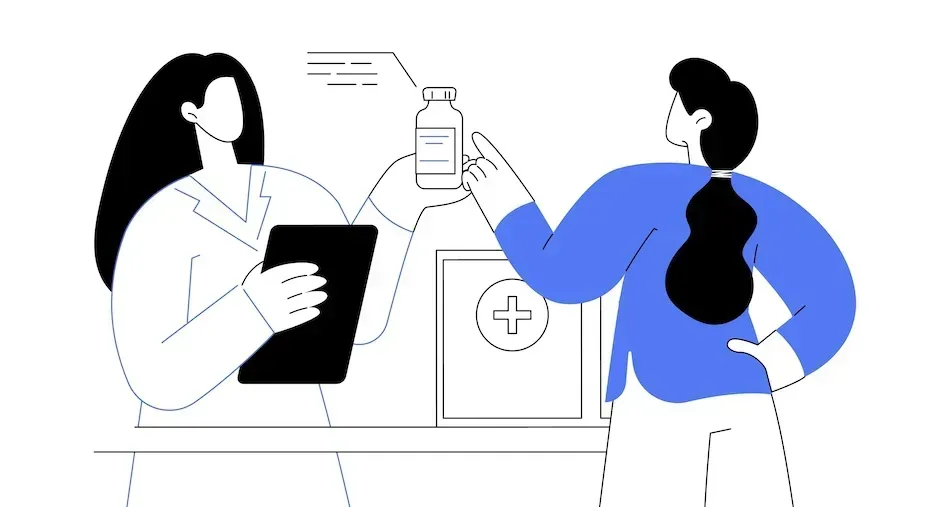Tests for CLL Patients: PET/CT Scan

CLL is a cancer that affects B-cells which are located in the blood, bone marrow, and lymph system. When CLL cells build up in the lymph system, it causes areas like the lymph nodes, spleen, and liver to swell. To detect these enlarged areas, a positron emission tomography (PET)/computed tomography (CT) scan is used.
Parts Of The Scan
- PET scan: Uses a small amount of a radioactive drug (called a tracer) to show how tissues and organs are functioning. This scan can help detect active cancer cells, as they tend to absorb more of the tracer due to the cancer cells’ higher metabolism
- CT scan: Uses X-rays to take slice-like pictures of the inside of the body. These pictures show the body's parts in detail and can help spot things that are not normal like enlarged lymph nodes, spleen, and liver
Uses of the PET/CT Scan for CLL Patients
- Staging: It helps determine the stage of the disease by showing which lymph system areas are enlarged (lymph nodes, spleen, liver). This information helps determine when the CLL patient should start treatment
- Treatment response: After treatments like targeted therapies, a PET/CT can show how well the medicine decreased cancer cells by highlighting the metabolic activity of a patient's cells
- Relapse detection: The scan may help find cancerous areas if the disease has come back after treatment
- Differentiating CLL from more aggressive lymphomas: Sometimes, CLL can transform into a more aggressive form of lymphoma, known as Richter's transformation. A PET/CT scan can help identify the transformation
How to Prepare for the Scan
Before receiving the PET/CT scan, patients may be asked to:
- Fast: Typically, patients are advised not to eat for 4-6 hours before the test. Water is usually allowed
- Avoid strenuous activity: Physical activity can affect the distribution of the tracer. It's advised to avoid strenuous activity 24 hours before the scan
- Discuss medications: Always inform your doctor about any medications you're taking, as some might interfere with the test results
- Allergies and health conditions: Notify your healthcare provider of any allergies or if you're pregnant or nursing
What to Expect During the Scan
The procedure generally involves the following steps:
- Tracer injection: A small amount of radioactive tracer is injected into a vein
- Waiting period: After the injection, patients might wait for about 30-90 minutes. This allows the tracer to be absorbed by the body
- Scan: Patients lie down on a table that slides into the PET/CT machine. The scan usually lasts between 20-45 minutes
Risks and Side Effects
The amount of radiation exposure from the scan is minimal and is considered safe for most patients. However, it's essential to discuss any concerns with your healthcare provider. Mild reactions to the radioactive tracer are rare but can include headache, nausea, or a rash.
Conclusion
A PET/CT scan helps CLL patients in a variety of ways. It provides insight into the disease's stage, how well treatments are working, and detecting relapse. Understanding how the scan works can help empower CLL patients and their caregivers to make informed decisions about their care. Ask your CLL specialist about any concerns you have related to your PET/CT scan.
CLL is a cancer that affects B-cells which are located in the blood, bone marrow, and lymph system. When CLL cells build up in the lymph system, it causes areas like the lymph nodes, spleen, and liver to swell. To detect these enlarged areas, a positron emission tomography (PET)/computed tomography (CT) scan is used.
Parts Of The Scan
- PET scan: Uses a small amount of a radioactive drug (called a tracer) to show how tissues and organs are functioning. This scan can help detect active cancer cells, as they tend to absorb more of the tracer due to the cancer cells’ higher metabolism
- CT scan: Uses X-rays to take slice-like pictures of the inside of the body. These pictures show the body's parts in detail and can help spot things that are not normal like enlarged lymph nodes, spleen, and liver
Uses of the PET/CT Scan for CLL Patients
- Staging: It helps determine the stage of the disease by showing which lymph system areas are enlarged (lymph nodes, spleen, liver). This information helps determine when the CLL patient should start treatment
- Treatment response: After treatments like targeted therapies, a PET/CT can show how well the medicine decreased cancer cells by highlighting the metabolic activity of a patient's cells
- Relapse detection: The scan may help find cancerous areas if the disease has come back after treatment
- Differentiating CLL from more aggressive lymphomas: Sometimes, CLL can transform into a more aggressive form of lymphoma, known as Richter's transformation. A PET/CT scan can help identify the transformation
How to Prepare for the Scan
Before receiving the PET/CT scan, patients may be asked to:
- Fast: Typically, patients are advised not to eat for 4-6 hours before the test. Water is usually allowed
- Avoid strenuous activity: Physical activity can affect the distribution of the tracer. It's advised to avoid strenuous activity 24 hours before the scan
- Discuss medications: Always inform your doctor about any medications you're taking, as some might interfere with the test results
- Allergies and health conditions: Notify your healthcare provider of any allergies or if you're pregnant or nursing
What to Expect During the Scan
The procedure generally involves the following steps:
- Tracer injection: A small amount of radioactive tracer is injected into a vein
- Waiting period: After the injection, patients might wait for about 30-90 minutes. This allows the tracer to be absorbed by the body
- Scan: Patients lie down on a table that slides into the PET/CT machine. The scan usually lasts between 20-45 minutes
Risks and Side Effects
The amount of radiation exposure from the scan is minimal and is considered safe for most patients. However, it's essential to discuss any concerns with your healthcare provider. Mild reactions to the radioactive tracer are rare but can include headache, nausea, or a rash.
Conclusion
A PET/CT scan helps CLL patients in a variety of ways. It provides insight into the disease's stage, how well treatments are working, and detecting relapse. Understanding how the scan works can help empower CLL patients and their caregivers to make informed decisions about their care. Ask your CLL specialist about any concerns you have related to your PET/CT scan.

about the author
Megan Heaps
Megan joined HealthTree in 2022. She enjoys helping patients and their care partners understand the various aspects of the cancer. This understanding enables them to better advocate for themselves and improve their treatment outcomes.
More on Navigating Your Health
Trending Articles

Get the Latest Chronic Lymphocytic Leukemia Updates, Delivered to You.
By subscribing to the HealthTree newsletter, you'll receive the latest research, treatment updates, and expert insights to help you navigate your health.
Together we care.
Together we cure.
3x Faster.









